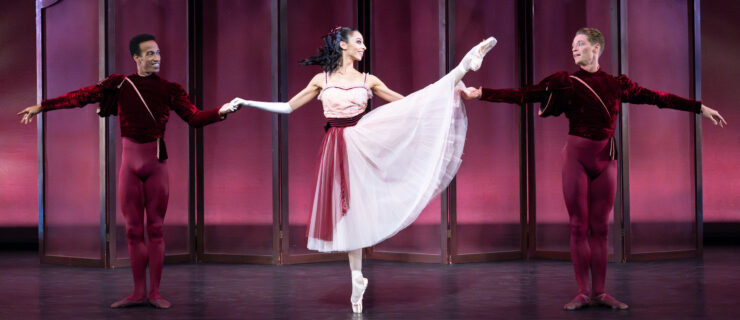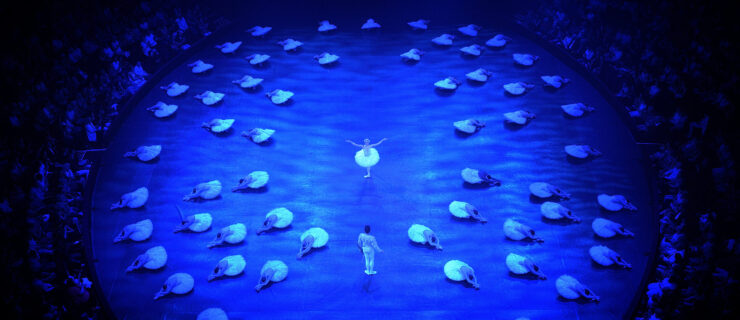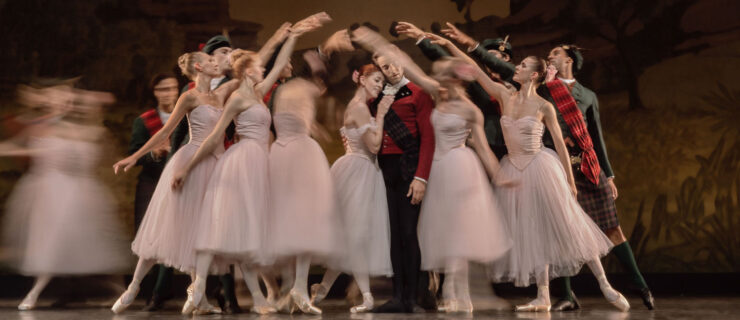Director's Notes: A Perfect Paradox
At Stuttgart Ballet, Reid Anderson embraces the traditional and the avant-garde.
Name the most prominent choreographers and directors in continental Europe, and the list reads like a who’s who of Stuttgart Ballet alumni. John Neumeier, Jirí Kylián and William Forsythe all came up through the ranks of the German company. Four decades after the death of its founder, choreographer John Cranko, Stuttgart Ballet remains a trendsetter under artistic director Reid Anderson, himself a product of the Stuttgart company.
Anderson has mastered an impressive balancing act. Extremes live in peaceful coexistence under the company’s repertory system: On alternate nights, dancers might go from the period costumes of Cranko’s Onegin or The Taming of the Shrew to the sleek leotards associated with its contemporary in-house creations. As many as five or six premieres make their way to the stage each season. Creativity is also encouraged through the Noverre-Society, an organization created in 1958 that supports new works.
Born in Canada, Anderson won a scholarship at age 17, in 1967, to finish his training at The Royal Ballet School. The day before he was due to fly to London, he happened upon a TV broadcast of Cranko’s Romeo and Juliet. It was love at first sight. The production would haunt him through his year at the RBS, and afterward, when he found himself languishing in the ranks of The Royal Opera Ballet, then a sister ensemble to The Royal Ballet. When Anderson learned that Cranko was looking for male dancers for a tour to New York’s Metropolitan Opera House, his parents wired him the money to fly to the audition. Anderson was admitted to the company, which was just gathering steam.
In 1961, Cranko, bolstered by successful creations in London, had taken over the relatively unknown ballet ensemble of the Württemberg State Theatre, as the Stuttgart State Theater was then called. In the ensuing decade, he created some of his best-known works, and the inaugural Met tour Anderson joined in 1969 catapulted the company from unknown entity to overnight sensation. The critics hailed the “Stuttgart Ballet Miracle,” and the name stuck. Anderson thrived under Cranko, dancing roles big and small. “I started to do things right away, and I learnt by doing,” Anderson says. “John was the most open person; his office was the canteen.”
Four years later, however, Cranko’s death left his dancers bereft. Anderson remembers: “He was everything to us, and it was an emotional wrench. I couldn’t even mention his name for 10 years.”
Anderson stayed on as a principal until 1986, gradually taking on teaching and coaching duties. But with his retirement came a desire to strike out from the comfort of Stuttgart. “I could have just become a ballet master, but I thought: There might be more to life than this. I was 35, young enough to learn new things. Becoming a director had always been in the back of my mind.”
And a directorship fell into his lap: A young Canadian company, Ballet BC, asked him to take over. As director, he brought in Kylián and Forsythe works and expanded the company from 12 to 18 dancers. The success didn’t escape the National Ballet of Canada, which asked Anderson to become its director in 1989. But a seven-year tenure there left Anderson weary of fundraising. “I spent all my time raising money,” he says. An abrupt 25 percent cut in the city’s funding in 1995 was the last straw.
The Stuttgart Ballet was looking for a new director at the time, and Anderson, feeling the pull of the company’s state-funded model, flew back to Germany for an interview. The next day, the job was his, but it came with a stringent responsibility: to fire 25 dancers. The company had become calcified at the top, with a mostly unfireable workforce. “In the German system, a new director is allowed to let people go,” Anderson explains. “It was firing people I grew up with, and it was seven months from hell, but it was worth it: When I started in the fall of 1996, I had 21 new dancers”—all his own hires.
Anderson set out to rebuild Stuttgart Ballet from the bottom up, in close collaboration with the John Cranko School, founded in 1971. Two-thirds of current company members completed their training there. Nearly all the principals have risen through the ranks, and the unusually tall men nurtured by Anderson, from Friedemann Vogel to Evan McKie, have won particular acclaim for their strength and charisma. “I love building up dancers, and the word is out: If you’re good enough, you could be a principal dancer by age 22,” Anderson says.
In Stuttgart, Anderson also found the secure funding Canada lacked. Stuttgart Ballet is one the few companies to have weathered the recession unscathed; there is generous public funding for the state theater system, and Porsche is a major sponsor.
Cranko’s legacy remains a touchstone for the company. At least one or two of his ballets return every season. Concerted efforts have also been made to preserve his repertoire by allowing other companies to perform it: “We wanted to make sure that the ballets would live on,” says Anderson. He and his team stage Cranko works around the world.
Stuttgart Ballet also performs a mix of 19th-century classics and 20th-century works by the likes of Neumeier, Kenneth MacMillan or Hans van Manen. Premieres define each season, however, and the Stuttgart’s own school of choreography has developed a recognizable look. New works are typically minimalistic, danced in the barest of costumes, the focus on boundary-pushing articulation and sleek partnering. “On tour in London, a critic mentioned that the dancers had practically nothing on, but it’s just so normal for us,” Anderson explains. “When we do workshops, I tell young choreographers: I want to see steps, creativity, and I would like to see bodies. Dancers have them, so why not?”
Stuttgart’s knowledgeable audience has embraced this ambitious diet, performed throughout the company’s year-round season. Attendance at its 1,400-seat Opera House and 800-seat Schauspielhaus was at 99.66 percent last season. “The audience loves the mix,” Anderson says. “We can do three new ballets by three young choreographers and sell out.”
At A Glance:
Stuttgart Ballet
Size:
63 dancers
Starting salary:
Company does not release information.
Length of contract:
Year-round (including yearly bonus and health insurance)
Performances:
103 to 110 at home and on tour
Website:
stuttgart-ballet.de
Audition Advice
Stuttgart Ballet rarely holds open auditions. “I prefer to have dancers come to Stuttgart and do class with the company, to see if they fit in,” Anderson says. “I’m a legs-and-feet person, and one thing I always look for is whether the person is truly dancing or not. You should be dancing already at the barre.”





